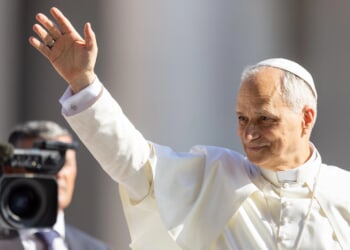Sao Paulo, Brazil, Jun 9, 2025 /
13:30 pm
The percentage of Brazilians who identify as Catholic fell to 56.75% in 2022, a reduction of 8.4% compared with 2010, according to data from the 2022 demographic census released by the Brazilian Institute of Geography and Statistics.
Despite the reduction, Catholicism remains by far the largest religion in the country, followed by evangelicalism and Brazilians who identify as having no religion, whose percentage has grown by 1.4% since 2010, accounting for 9.28% of the population. Evangelicals posted growth of 5.2% during the period, comprising 26.9% of the country’s population of just over 203 million people.
The trend of increasing numbers of people without a religious affiliation was discussed by the bishops during a January meeting in Rio de Janeiro. The archbishop of Porto Alegre and president of the National Conference of Bishops of Brazil, Cardinal Jaime Spengler, referred to this population as “dechurched.” Spengler said “there is an urgent need to invest in initiation into Christian life and the valorization of small communities of faith so that Catholicism can grow in Brazil.”
Other religions account for 4.01% of the population. Spiritists represent 1.84%, while followers of Umbanda and Candomblé account for 1.05%.
Catholicism is the most prevalent religion in the five regions of the country, with the highest concentration in the northeast with 63.9% of the population, followed by the south with 62.4%, the central-west with 52.6%, and the southeast with 52.24%. The north has the lowest proportion of Catholics, 50.48%.
Conversely, the north has the most evangelicals, with 36.79% of the population, followed by the central-west with 31.39%, the southeast with 27.96%, and the south with 26.66%. The northeast is the region with the fewest evangelicals, with 22.47%.
Followers of Umbanda and Candomblé rose from 0.3% in 2010 to 1% of the country’s population in 2022. They have the most followers in the south, with 1.6% of the population, followed by the southeast with 1.4%, the central-west with 0.57%, the northeast with 0.56%, and the north with 0.3%.
The southeast is the region with the most people who declared themselves to have no religion, with 10.5% of the population, followed by the central-west with 8.94%, northeast with 8.85%, north with 8.19%, and south with 7.13%.
The number of followers of spiritualism fell from 2.2% in 2010 to 1.8% in 2022 and its largest concentration is in the southeast with 2.7% of the region’s population.
This story was first published by ACI Digital, CNA’s Portuguese-language news partner. It has been translated and adapted by CNA.

















